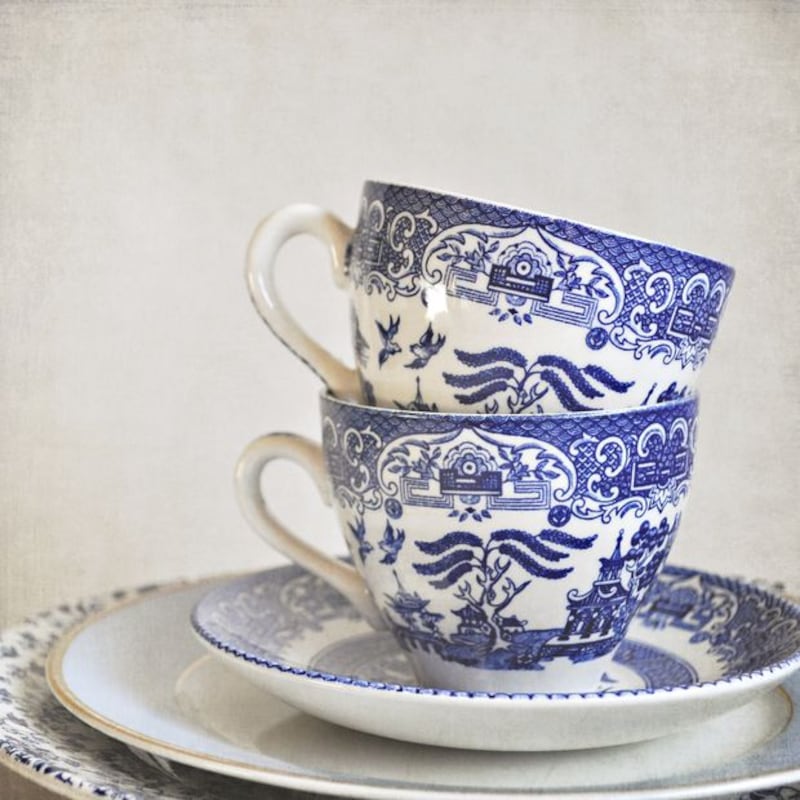Trade with China exploded during the 17th century, and it has been estimated that more than three million pieces of Chinese blue and white porcelain were imported into northern Europe where the landed classes built up vast collections – chinoiserie was very much in fashion.
By the mid 18th century when English potteries expanded, they sought to fill this demand which had already trickled down to merchant classes by providing their own versions of Chinese-inspired tableware. The Willow Pattern is the most famous and enduring design. It is not known who first drew the pattern – although the Caughley factory is often credited with producing it in 1780, where a young Thomas Minton was apprenticed as an engraver.

All the major English factories produced Willow Pattern – and went on to do so for decades – most notably Worcester and Minton but also, among others, Spode, Adams and Wedgwood. Engravers moved around, designs were copied and there was no copyright on them. Transfer printing made the process of production relatively inexpensive.
Willow Pattern presented a fantasy image of China to people who would never go and chinoiserie remained highly fashionable right up to the Victorian era. While each factory’s design is slightly different, there are similarities. Blue and white is the most common colourway in homage to the 17th-century origins. The narrative as presented is based on a fable, of a rich man whose daughter falls in love with his employee, an arranged marriage with a wealthy old man is foisted on her – the lovers escape and are turned into doves. Details in most Willow Pattern include a willow tree – a dominant image – a bridge with three people walking towards a pavilion, a ziz-zag fence, a boatman, ornate traditional Chinese buildings and two doves.












